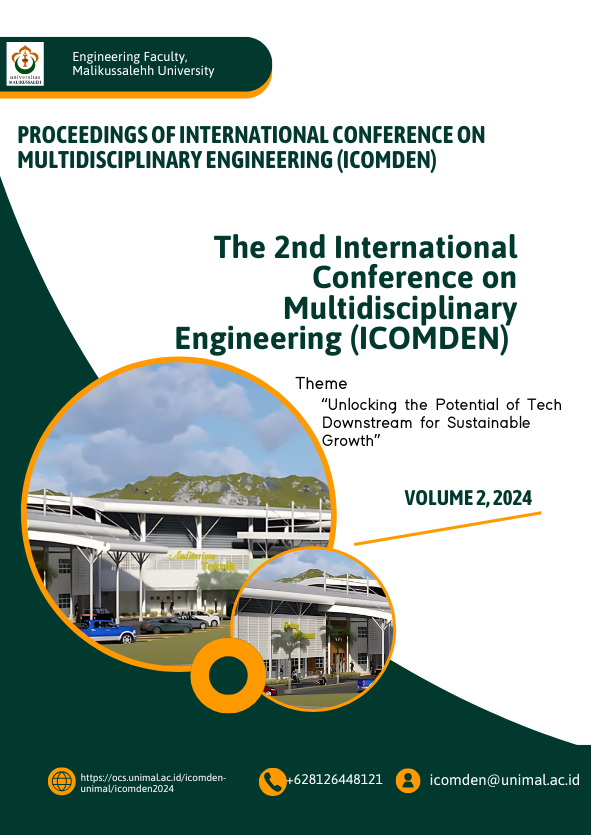Implementation Of The Adaboost Method On Linear Kernel Svm For Classifying Pip Assistance Recipients At SMP Negeri 2 Kejuruan Muda
Keywords:
AdaBoost, SVM, Indonesian, Smart Program, PIP aid, Machine Learning, student eligibility, classificationAbstract
Abstract: This study examines the application of the AdaBoost algorithm to a Linear Kernel Support Vector Machine (SVM) for determining student eligibility for the Indonesian Smart Program (PIP) at SMP N 2 Kejuruan Muda. The main objective is to improve the accuracy and fairness of the PIP aid distribution using advanced machine learning techniques. The dataset used comprises 500 student records, which include demographic, academic, and economic factors. The dataset was divided into training and testing sets, with the AdaBoost algorithm applied to enhance the SVM model’s performance. The study found that the SVM model optimized with AdaBoost was able to classify 91 students as eligible for PIP aid, achieving an impressive accuracy rate of 97.85%. Only 2 students were classified as ineligible, representing 2.15% of the total sample. When compared to the standard SVM model, which also classified 91 students as eligible, the key advantage of AdaBoost lies in its ability to handle borderline data more effectively. AdaBoost improves the classification of students whose eligibility was less clear by reinforcing the importance of difficult-to-classify instances. The model’s higher precision on edge cases indicates that AdaBoost offers a significant improvement over traditional SVM models in handling complex classification tasks. This research concludes that incorporating AdaBoost into SVM models provides a more robust and accurate method for determining student eligibility for government aid programs such as PIP.
Keywords: AdaBoost, SVM, Indonesian Smart Program, PIP aid, machine learning, student eligibility, classification.
References
[1] M. Fiqih, U. Dayat, and K. Febriantin, “Implementasi kebijakan program indonesia pintar (pip) pada jenjang sekolah dasar,” Kinerja, vol. 18, no. 4, pp. 539–546, 2022, doi: 10.30872/jkin.v18i4.10097.
[2] U. Indahyanti, N. L. Azizah, and H. Setiawan, “Pendekatan Ensemble Learning Untuk Meningkatkan Akurasi Prediksi Kinerja Akademik Mahasiswa,” J. Sains dan Inform., vol. 8, no. 2, pp. 160–169, 2022, doi: 10.34128/jsi.v8i2.459.
[3] M. Fiqih, U. Dayat, and K. Febriantin, “Implementasi kebijakan program indonesia pintar (pip) pada jenjang sekolah dasar,” Kinerja, vol. 18, no. 4. pp. 539–546, 2022. doi: 10.30872/jkin.v18i4.10097.
[4] M. S. Rahmawati, T. H. Iskandar Alam, and S. Sulfiana, “Sistem Pendukung Keputusan Seleksi Penerima Beasiswa Program Indonesia Pintar di SMK Negeri 1 Sorong Dengan Menggunakan Metode Analytical Hierarchy Process Berbasis Dekstop,” Insect (Informatics Secur. J. Tek. Inform., vol. 5, no. 1, p. 31, 2019, doi: 10.33506/insect.v5i1.1281.
[5] Mahesh Batta, “Machine Learning Algorithms - A Review,” Int. J. Sci. Res., no. October, 2020, doi: 10.21275/ART20203995.
[6] S. Saroji, E. Winata, P. P. W. Hidayat, S. Prakoso, and F. Herdiansyah, “The Implementation of Machine Learning in Lithofacies Classification using Multi Well Logs Data,” Aceh Int. J. Sci. Technol., vol. 10, no. 1, pp. 9–17, 2021, doi: 10.13170/aijst.10.1.18749.
[7] D. Gao et al., “An Intelligent Control Method for Servo Motor Based on Reinforcement Learning,” Algorithms, vol. 17, no. 1, pp. 1–15, 2024, doi: 10.3390/a17010014.
[8] A. Z. Praghakusma and N. Charibaldi, “Komparasi Fungsi Kernel Metode Support Vector Machine untuk Analisis Sentimen Instagram dan Twitter (Studi Kasus : Komisi Pemberantasan Korupsi),” JSTIE (Jurnal Sarj. Tek. Inform., vol. 9, no. 2, p. 88, 2021, doi: 10.12928/jstie.v9i2.20181.
Downloads
Published
How to Cite
Issue
Section
License
Copyright (c) 2024 MUHAMMAD FAHRI AL FIKRI, Asrianda, S.Kom., M.Kom, Zahratul Fitri, B.SC., M.Kom

This work is licensed under a Creative Commons Attribution-ShareAlike 4.0 International License.
Copyright Notice
Authors published in this journal agree to the following terms:
1. The copyright of each article is retained by the author (s).
2. The author grants the journal the first publication rights with the work simultaneously licensed under the Creative Commons Attribution License, allowing others to share the work with an acknowledgment of authorship and the initial publication in this journal.
3. Authors may enter into separate additional contractual agreements for the non-exclusive distribution of published journal versions of the work (for example, posting them to institutional repositories or publishing them in a book), with acknowledgment of their initial publication in this journal.
4. Authors are permitted and encouraged to post their work online (For example in the Institutional Repository or on their website) before and during the submission process, as this can lead to productive exchanges, as well as earlier and larger citations of published work.
5. Articles and all related material published are distributed under a Creative Commons Attribution-ShareAlike 4.0 International License.






